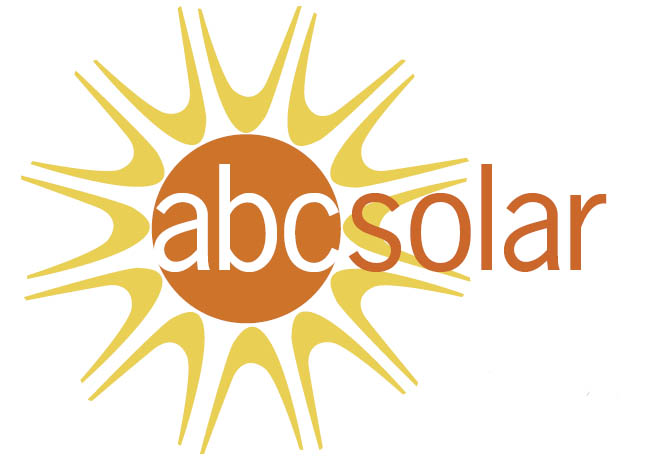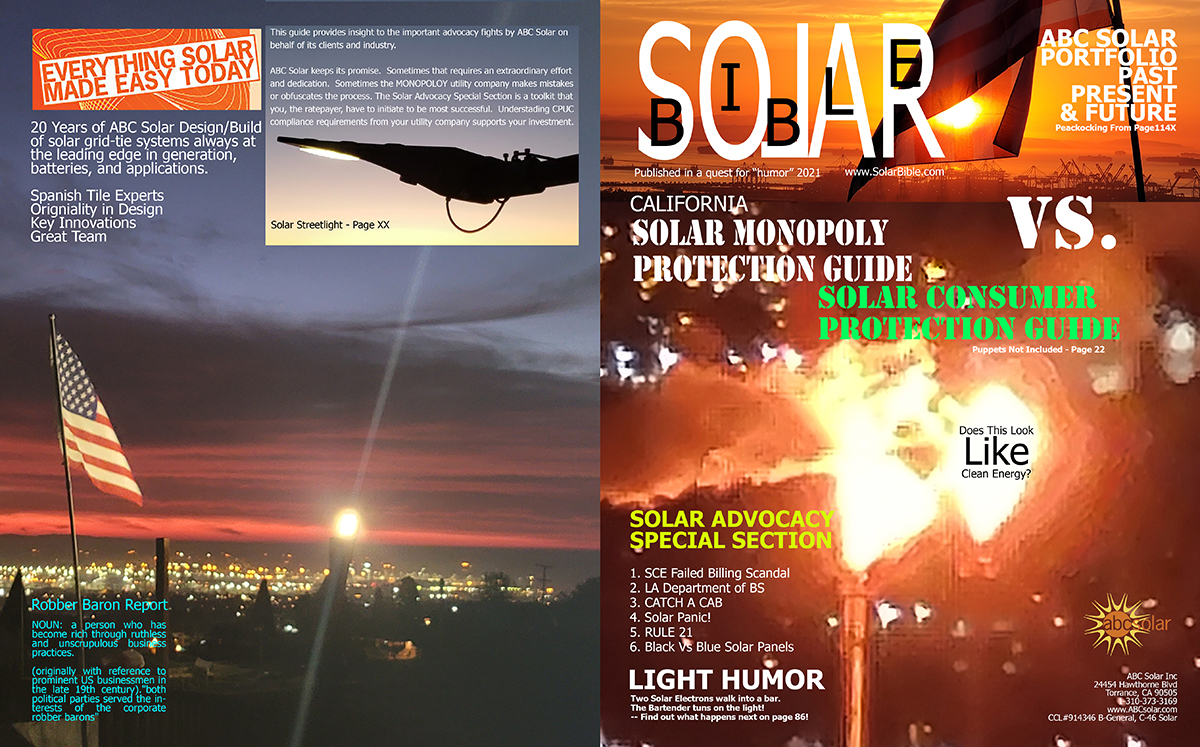| |||||||||||||||||||||||||
|
Frequently Asked Questions by ABC Solar Clients Sunnyboy 2500 - OG Baby. Frequently Asked Questions 1. What is the most efficient Solar application? Two answers. For Solar electric systems water pumping is the most efficient. This is because DC motors are more efficient than AC motors. For solar thermal systems heating water is the most common solar application and by far the most efficient at an estimated 40% conversion efficiency.
2. What are the rebates and tax credits? The federal tax credit is 30% and then it will be 10%. Some utility and state rebates do still exist, but the price of solar has dropped significantly so the rebates are not needed as much anymore. The primary financial driver is how expensive is your utility company charging you per kWh. Please see www.dsireusa.org for up to date rebate and tax credit information state by state. Please contact us directly for information about the Japanese market. 3. How much does it cost and when do I break even? Commercial solar systems are breaking even in a little as 3 years. Residential is 5 to 11 years depending on how much utility company is charging. Southern California Edison is closer to 5 years. 4. Should I use a tracking system? Moving parts, so generally no. But, some applications it does make sense. In very sunny areas tracking can increase solar production by more than 40%. In cloudy areas flat is better to catch as much sun when it does happen. 5. What is the best panel orientation? Orientation Factor For Annual Energy Production in California - Source Endecon Engineering 6. Who invented solar panels? Albert Einstein won the Nobel Prize in Physics for his description of the Photoelectric Effect. According The Nobel Prize: The Nobel Prize in Physics 1921 was awarded to Albert Einstein “for his services to Theoretical Physics, and especially for his discovery of the law of the photoelectric effect”. From the opening ceremony of the Nobel Prize: “… Similarly, when a quantum of light falls on a metal plate it can at most yield the whole of its energy to an electron there. A part of this energy is consumed in carrying the electron out into the air, the remainder stays with the electron as kinetic energy. This applies to an electron in the surface layer of the metal. From this can be calculated the positive potential to which the metal can be charged by irradiation.” Only if the quantum contains sufficient energy for the electron to perform the work of detaching itself from the metal does the electron move out into the air. Consequently, only light having a frequency greater than a certain limit is capable of inducing a photo-electric effect, however high the intensity of the irradiating light. If this limit is exceeded the effect is proportional to the light intensity at constant frequency. Similar behaviour occurs in the ionisation of gas molecules and the so-called ionisation potential may be calculated, provided that the frequency of the light capable of ionising the gas is known.” --- I just love science! 7. How much power does 1KW DC of solar make? 1KW x 4 Sun Hours x 30 days = 120 kWh per month. The primary driver is Sun Hours. This differs by location. Ok, that is the simple way for us to calculate 1KW of solar production. Really it is the efficiency of the solar panels to the amount of watts in sunshine per 1 square meter. If a solar panel was 15% efficient and was 1 square meter in size it would generate 15% of the total sunshine value. In los Angeles sunshine is about 1,500 watts per square meter, so a 1 sq mt panel would generate 225 watts. 8. How much to power my 3,000 square foot home? This depends on how much electricity you use. The average American home uses 500 kWh a month. If you have a pool, the pool is using about 400 kWh a month just to circulate and filter the water.
Look at your electricity bill. Find the number of kWh you use per month. Divide that number by 120 (this is the average monthly production for 1KW of solar electric grid-tie panels). The result will be the number of KW you need to ma.ke all of your power by solar. You need approximately a 8.5KW solar system to make your electric bill close to zero. Another quick method is: a Solarworld 275 solar panel will make about 1 kWh per day. What is your daily usage? . The system size in kw is what? how is that calculated? The system size is in Direct Current (DC) watts. This is calculated using the nameplate DC watt rating from the solar panel manufacturer. 32 x 275 watts = 8,800 watts DC. Please remember that this is before the inverter does its magic and we get connected to the grid. It is typical for 15% to be lost and the AC watt number to be 7,480 watts AC. 10. My electricity usage offset would be what? Our general target is to make 100% of your electricity with solar panels. This means that your electric bill would be reduced to just a minor amount to stay connected to the grid. If we are building a smaller than usage system then each kWh is valued at what it would have cost you from the utility. Please note our experience is that consumers will start to use more electricity after they install their solar system. We don’t mind this at all, but it does make answering this question harder. 11. Why is a centralized inverter being used over micro inverters? I am told they are less reliable, costly to expand (add panels), suffer from one panel being affected by shade or failure takes down entire system’s productivity. Educate me, I am not knowledgeable on this. The centralized inverter from SMA now comes with a 15amp circuit that allows you to use your solar power during a blackout. Micro inverters are for shade issue locations and folks that like to see production of each inverter. You to choose either the SMA with 15amp plug or micro inverters. Both types of inverters are very reliable. The centralized string inverter is usually designed to max capacity so expansion means a new system. 12. Are there other costs for me to be aware of? Like service panel impact, etc. The key item is your main panel size in amps, e.g. 200 amps. This determines the max solar system size that can be installed. If an upgrade to your electrical system is needed we will discuss with your utility company and get a price for that. Also, If there are free breaker spots then we just plug into those. If we need to add a sub-panel to backfeed then extra cost is about $500. 13. Tell me about the PACE financing, interest rate and is it tax deductible, lien on my house?, can the term be adjusted to say 12 yrs, ownership of the system. PACE stands for Property Assessed Clean Energy – this allows you to finance energy improvements over 20 years and pay it back on your Property Tax Bill. This is the PACE funder we use. Please see https://heroprogram.com/ The term can be adjusted. You would own the system and keep the tax credit and any deductions. It is added to your property tax bill so you can consider it part of your tax lien. For commercial PACE see www.LApace.org. 14. Who would I deal with for service issues? ABC Solar will handle all of your service issues. Please contact us on 1-866-40-SOLAR or [email protected] 15. Permits included? No, Permit Fees, structural engineering or other fees are not included. Basic permit design is. 16. Is an allowance for climate patterns by scaling the system by some factor? That is a good question. In Japan we use 17 years of weather patterns to try and judge changes, but weather patterns are not what they used to be. In California we have the anal retentive California Energy Commission that has mesh data for every part of the state. |
| |||||||
|
|
 | 
|
| ||||||||||||||||||||||


